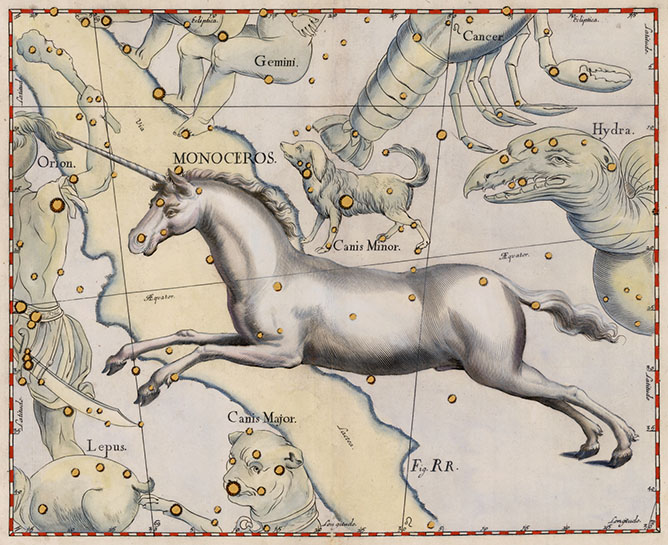Monoceros: The Unicorn
Pronunciation: muh-NAH-ser-us
| Monoceros Constellation Profile | |
|---|---|
| Abbreviation: Mon | Genitive: Monocerotis |
| Origin: Ancient | Location: Celestial Equator |
| Best View (North): Winter | Best View (South): |
| Bordering Constellations: Gemini, Orion, Lepus, Canis Major, Puppis, Hydra, Canis Minor | |
The Myth Behind the Constellation Monoceros
Monoceros, a modern constellation, was created by Dutch astronomer Petrus Plancius in the seventeenth century. It represents the mythical unicorn, a single-horned animal, which appears several times in the Bible. This star group was introduced in 1612 on a star globe created by Plancius. He also invented the constellation Camelopardalis.Monoceros Constellation Points of Interest
| Interesting Objects in the Constellation Monoceros | ||||
|---|---|---|---|---|
| Name | Messier | NGC | Type | Visibility |
| M50 | NGC 2323 | Open Cluster | Binoculars | |